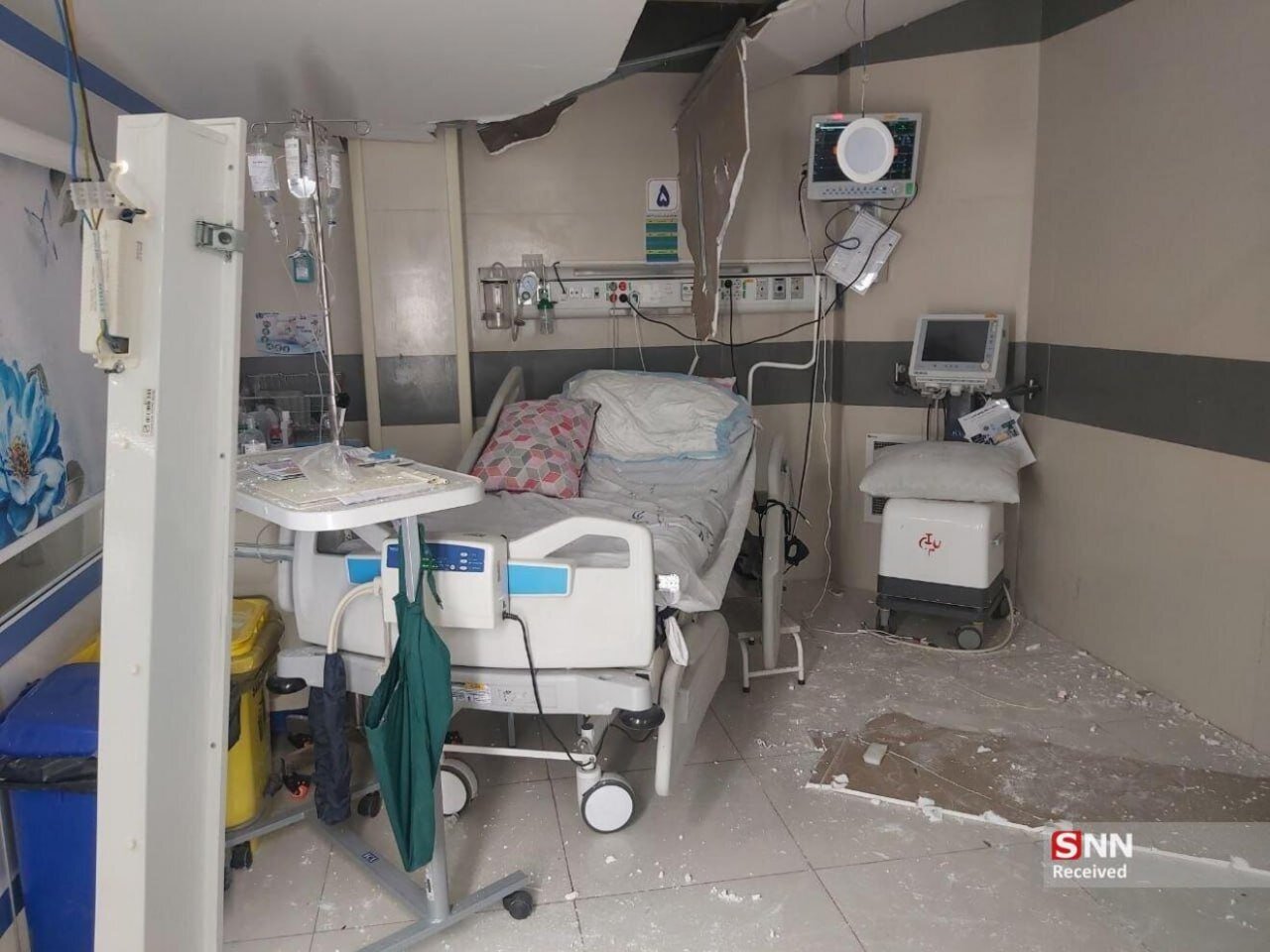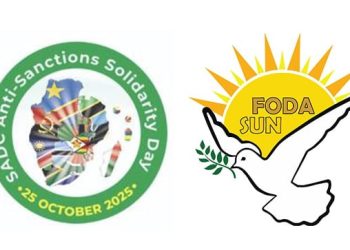The 12-day conflict between Israel and Iran was characterized not only by exchanges of fire and extensive bombings but also by an unprecedented pattern of explicit and systematic violations of fundamental principles of international humanitarian law and human rights. During this military crisis, repeated and targeted Israeli attacks on Iran’s medical facilities, hospitals, ambulances, relief bases, and medical personnel represented a significant escalation in tensions and a flagrant violation of international immunities.
These actions occurred despite established principles such as distinction, proportionality, military necessity, and the protection of medical and relief personnel, all clearly enshrined in the Geneva Conventions, their Additional Protocols, and the Rome Statute of the International Criminal Court.
A statistical and field review of the attacks indicates that seven hospitals and medical centers, eleven ambulances, one medical evacuation helicopter, and six relief bases were directly or indirectly targeted. The deaths of eighteen medical staff members and five aid workers, along with the destruction of 1,500 hospital beds, reflect a substantial toll on human lives and infrastructure, all of which contravene humanitarian norms, fundamental principles of the law of armed conflict, and binding international treaties.
This report, grounded in credible legal documentation, aims to illuminate the human, statistical, and legal dimensions of these attacks, emphasizing various aspects of the Israeli government’s accountability and the potential for pursuing justice in international forums. The analysis of international humanitarian law principles and instances of their violation forms another critical component of this assessment, establishing a foundation for legal claims and the documentation of war crimes.
Attacks on Medical Facilities, Medical Personnel, and Relief Infrastructure in Iran
The following details outline the Israeli attacks on medical centers, medical personnel, and relief infrastructure in Iran during the 12-day conflict. This information is categorized and presented based on officially released data, including statistics, locations, and the nature of the damages:
1. Attacks on Hospitals
The names, locations, and extent of damage to hospitals are as follows:
- Shahid Motahari Hospital, Tehran: Partial building destruction
- Labbafinezhad Hospital, Tehran: Damage to portions of the building
- Hazrat Fatemeh Zahra Hospital, Tehran: Partial building destruction
- Farabi Hospital, Kermanshah: Partial building destruction
- Mian Rahan Comprehensive Health Center, Dinavar, Kermanshah: Significant damage
- One medical center in Robat Karim, Tehran Province: Partial building damage
- Evin Prison Clinic, Tehran: Severe damage coinciding with the bombing of seven buildings (Khabarfarsi, 2025, khabarfarsi.com/u/219055633)
In total, seven hospitals and medical centers were directly or indirectly targeted.
2. Damage to Ambulances and Relief Fleet
- Ambulances: 11 vehicles were damaged (BBC News, 2025, BBC News, 2025, https://www.bbc.com/persian/articles/cp3k7nky147o)
- Medical evacuation helicopter: One helicopter sustained severe damage (Fararu, 2025, Fararu, 2025, https://fararu.com/fa/news/877398/%D8%A2%D8%B3%DB%8C%D8%A8-%D8%A8%D8%A7%D9%84%DA%AF%D8%B1%D8%AF-%D8%A7%D9%85%D8%AF%D8%A7%D8%AF%DB%8C-%D9%87%D9%84%D8%A7%D9%84-%D8%A7%D8%AD%D9%85%D8%B1-%D8%AF%D8%B1-%D9%BE%DB%8C-%D8%AD%D9%85%D9%84%D9%87-%D8%A7%D8%B3%D8%B1%D8%A7%D8%A6%DB%8C%D9%84)
3. Medical Personnel Martyred
The following job titles and numbers of medical personnel killed are reported:
- Physicians: 6 individuals
- Nurses, paramedics, and technicians: 12 individuals
- Total medical personnel killed: 18 (IRNA, 2025, https://www.irna.ir/news/85883493/%D8%AD%D9%85%D9%84%D9%87-%D9%85%D8%B3%D8%AA%D9%82%DB%8C%D9%85-%D8%A7%D8%B3%D8%B1%D8%A7%DB%8C%DB%8C%D9%84-%D8%A8%D9%87-%DB%B7-%D8%A8%DB%8C%D9%85%D8%A7%D8%B1%D8%B3%D8%AA%D8%A7%D9%86-%DB%B7%DB%B0%DB%B0-%D8%BA%DB%8C%D8%B1%D9%86%D8%B8%D8%A7%D9%85%DB%8C-%D8%B4%D9%87%DB%8C%D8%AF-%D9%88-%D8%A7%D9%81%D8%B2%D9%88%D9%86)
- All individuals were engaged in providing medical services to the wounded or were stationed at the targeted facilities.
4. Civilian Casualties and Injuries
Official statistics on civilian casualties and injuries are as follows:
- Civilian deaths: Approximately 700 individuals
- Total deaths (according to the Ministry of Health): 1,060 individuals
- Civilian injuries: 5,750 individuals
- Currently admitted patients in intensive care units: 75 out of 170 hospitalized wounded (BBC News, 2025, https://www.bbc.com/persian/articles/cp3k7nky147o)
5. Relief Workers and Rescue Operations
- Red Crescent martyrs: 5 aid workers (Vista, 2025, https://vista.ir/n/fardanews-sull2)
- Search and rescue operations:
- 15 individuals rescued from rubble
- 188 bodies recovered
- Animal casualties during rescue efforts: Two search dogs perished due to the demanding workload and severe conditions (Salamatresaneh, 2025, https://salamatresaneh.ir/%D9%86%D8%AC%D8%A7%D8%AA-%DB%B1%DB%B5-%D9%81%D8%B1%D8%AF-%D8%B2%D9%86%D8%AF%D9%87-%D9%88-%DA%A9%D8%B4%D9%81-%D9%BE%DB%8C%DA%A9%D8%B1-%DB%B1%DB%B8%DB%B8-%D9%86%D9%81%D8%B1-%D8%A7%D8%B2-%D8%B2%DB%8C)
6. Health Sector Infrastructure Damage
The extent of infrastructure damage is as follows:
- Hospital beds damaged: Approximately 1,500 beds (according to the head of the Red Crescent)
- Relief infrastructure damage: Significant, but exact financial losses have not yet been accurately reported (BBC News, 2025, https://www.bbc.com/persian/articles/cp3k7nky147o)
Key Violations of International Humanitarian Law and Human Rights Principles
This section analyzes the legal aspects of fundamental principles of international humanitarian law (IHL) and human rights pertinent to the attacks on medical facilities, medical personnel, and relief workers during the Israeli assaults on Iran. These principles constitute the foundation of the contemporary humanitarian legal framework, and their legal examination is crucial for addressing violations, documenting war crimes, and initiating international legal actions.
1. Principle of Prohibition of Attacks on Specially Protected Objects
In accordance with Article 18 of the Fourth Geneva Convention (1949) (ICRC, 1949, https://ihl-databases.icrc.org/en/ihl-treaties/gciv-1949/article-18) and Article 12 of the First Additional Protocol (OHCHR, 1949, https://www.ohchr.org/en/instruments-mechanisms/instruments/protocol-additional-geneva-conventions-12-august-1949-and-0), hospitals and civilian medical units are afforded special protection, provided they are not utilized for hostile purposes.
Medical facilities, whether military or civilian, receive enhanced protection that extends to hospital buildings, medical equipment, personnel, and vehicles (including ambulances). The use of these facilities as shelters for civilians (e.g., during missile attacks) does not compromise their legal protection. Even in proximity to front lines, as long as hospitals engage in humanitarian and medical activities and are not repurposed for military objectives, they are deemed immune from attack. This principle is expressly underscored in Article 19 of the Fourth Geneva Convention (1949) (ICRC, 1949, https://ihl-databases.icrc.org/en/ihl-treaties/gciv-1949/article-19).
Further legal substantiation of this principle is provided by Article 20 of the Fourth Geneva Convention (1949) (ICRC, 1949, https://ihl-databases.icrc.org/en/ihl-treaties/gciv-1949/article-20), as well as Articles 13 and 14 of the First Additional Protocol (OHCHR, 1949, https://www.ohchr.org/en/instruments-mechanisms/instruments/protocol-additional-geneva-conventions-12-august-1949-and-0), and Rules 28 to 30 of the ICRC Customary International Humanitarian Law study (ICRC, 2025, https://ihl-databases.icrc.org/en/customary-ihl/v1/rule28).
2. Principle of Protection of Medical and Humanitarian Personnel
Article 20 of the Fourth Geneva Convention stipulates:
“Doctors, nurses, technicians, and aid workers, regardless of nationality, are protected from any attacks, arbitrary detention, or obstruction as long as they perform their humanitarian duties.”
All medical personnel – from doctors and nurses to ambulance drivers—are fully protected while actively engaged in medical or humanitarian activities. Any attack, threat, detention, obstruction of services, or insult to their dignity constitutes a clear violation of international law.
Additional legal sources affirming this principle include:
- Articles 24 and 26 of the First Geneva Convention (ICRC, 1949, https://ihl-databases.icrc.org/en/ihl-treaties/gci-1949)
- Articles 15 and 16 of the Fourth Geneva Convention (ICRC, 1949, https://ihl-databases.icrc.org/en/ihl-treaties/gciv-1949)
- Rules 25 and 31 of the ICRC Customary International Humanitarian Law study (ICRC, 1949, https://ihl-databases.icrc.org/en/customary-ihl/v1)
- Article 8(2)(b)(iii) of the Rome Statute (regarding war crimes for intentionally attacking medical personnel) (Casematrixnetwork, 2025, https://www.casematrixnetwork.org/cmn-knowledge-hub/elements-digest/art8/b/8-2-b-iii)
3. Principle of Humanitarian Imperatives
The humanitarian imperative, which underpins the Geneva Conventions, mandates that no action obstructs the relief and treatment of the wounded, even if they are enemy combatants. All humanitarian efforts to save patients and civilians, including the delivery of medicines, medical supplies, and rescue operations, must be protected. Blocking humanitarian aid, besieging medical supplies, or attacking Red Crescent teams constitutes a direct violation of humanitarian immunity.
Relevant legal instruments include:
- Article 23 of the Fourth Geneva Convention (ICRC, 1949, https://ihl-databases.icrc.org/en/ihl-treaties/gciv-1949/article-23)
- Rules 55 and 56 of the ICRC Customary International Humanitarian Law study (ICRC, 2025, https://ihl-databases.icrc.org/en/customary-ihl/v1/rule55)
- United Nations General Assembly and Security Council Resolutions (e.g., Security Council Resolution 2286 (2016) on the protection of medical care in armed conflict) (Press, 2016, https://press.un.org/en/2016/sc12347.doc.htm)
- Common Article 3 of the Geneva Conventions, which ensures protection without discrimination for all persons not actively involved in hostilities, including the wounded and sick (ICRC, 1949, https://ihl-databases.icrc.org/en/ihl-treaties/gci-1949/article-3)
- Article 70 of the First Additional Protocol: the delivery of essential supplies (medicines, water, and food) to civilians must not be prohibited or delayed (ICRC, 1977, https://ihl-databases.icrc.org/en/ihl-treaties/api-1977/article-70)
4. War Crimes
According to Articles 8(2)(b)(ix) and 8(2)(b)(xxiv) of the Rome Statute of the International Criminal Court (ICC) (1998), intentionally directing attacks against civilian medical facilities, medical or humanitarian personnel performing their duties, and medical infrastructure bearing internationally recognized emblems, when protected, constitutes a war crime (ICRC, 1998, https://ihl-databases.icrc.org/en/ihl-treaties/icc-statute-1998/article-8).
If the Israeli attacks on Iran’s medical centers are determined to be deliberate, widespread, and systematic, they would constitute war crimes, making commanders, perpetrators, and instigators individually criminally liable. Universal jurisdiction allows states to prosecute these individuals even beyond their borders. Additionally, the aggressor state holds international responsibility before international forums and diplomatic bodies.
Conclusion
Based on field data, official statistics, and an analysis of international humanitarian law principles, the Israeli attacks on medical centers, healthcare personnel, and emergency infrastructure in Iran during the 12-day conflict represent a clear and multifaceted violation of war crimes and gross breaches of international human rights law. These actions targeted defenseless human lives and severely undermined medical and emergency systems that serve as vital lifelines in crisis.
The attacks on hospitals, ambulances, medical staff, and aid workers—despite the lack of any evidence indicating military use of these facilities—constitute a blatant violation of key principles, including the principles of distinction, proportionality, special protection of medical facilities, humanitarian immunity, and the right to life. Such violations, as outlined in Article 8 of the Rome Statute of the International Criminal Court and the Geneva Conventions, amount to war crimes and provide a legal basis for international accountability.
From an international legal and political perspective, the continuation of such practices without a decisive legal response will not only erode international norms but also delegitimize the existing legal framework in the eyes of global public opinion. Therefore, the following actions are imperative:
- Identification of direct and indirect perpetrators of these crimes, along with thorough legal and field documentation;
- Immediate initiation of legal proceedings against the State of Israel at the International Court of Justice (ICJ) and the International Criminal Court (ICC);
- Utilization of universal jurisdiction by states to prosecute the perpetrators in national courts;
- Revitalization of international mechanisms to protect medical infrastructure during armed conflicts, including through the United Nations Security Council and the International Committee of the Red Cross.
Beyond legal and humanitarian dimensions, these attacks have long-term and irreparable consequences for public health and healthcare systems in the region. The destruction of medical facilities, shortages of medicines and equipment, displacement of healthcare personnel, and public fear in targeted areas exacerbate humanitarian crises, increase civilian mortality, and lead to the collapse of primary health services. This trajectory not only intensifies suffering for the current generation but also deprives future generations of basic health and security, perpetuating a cycle of chronic instability and vulnerability within the social and human fabric of the region.
In such circumstances, the role of the international community and responsible institutions in maintaining humanitarian neutrality and ensuring justice becomes increasingly critical. Silence or inaction by states and international organizations risks repeating such crimes and severely undermines public trust in peacekeeping and justice institutions. To prevent impunity from becoming institutionalized and to avert similar future tragedies, international standards must be reflected not only in declarations and resolutions but also in concrete actions, enforcement mechanisms, and prompt responses. Effective action, accountability, and global solidarity are crucial for preserving human dignity in the face of systematic and targeted aggression.
Ultimately, the most vulnerable groups in any conflict are the patients, aid workers, and medical personnel; silence in the face of attacks on them constitutes a violation of global conscience and undermines the legacy of humanity in the modern era. This report seeks to reflect reality, uphold justice, and compel the international community to act.
Resources
- Khabarfarsi (2025), Damage to 7 hospitals in 12-day war, Accessible at: khabarfarsi.com/u/219055633 (in Persian)
- BBC News (2025), Iran’s Health Minister says Israeli strikes killed around “700 civilians” and “directly attacked seven hospitals”, Accessible at: https://www.bbc.com/persian/articles/cp3k7nky147o (in Persian)
- Fararu (2025), Red Crescent rescue helicopter damaged following Israeli attack, Accessible at: https://fararu.com/fa/news/877398/%D8%A2%D8%B3%DB%8C%D8%A8-%D8%A8%D8%A7%D9%84%DA%AF%D8%B1%D8%AF-%D8%A7%D9%85%D8%AF%D8%A7%D8%AF%DB%8C-%D9%87%D9%84%D8%A7%D9%84-%D8%A7%D8%AD%D9%85%D8%B1-%D8%AF%D8%B1-%D9%BE%DB%8C-%D8%AD%D9%85%D9%84%D9%87-%D8%A7%D8%B3%D8%B1%D8%A7%D8%A6%DB%8C%D9%84 (in Persian)
- Irna (2025), Direct Israeli attack on 7 hospitals/ 700 civilians martyred and over 5,000 injured, Accessible at: https://www.irna.ir/news/85883493/%D8%AD%D9%85%D9%84%D9%87-%D9%85%D8%B3%D8%AA%D9%82%DB%8C%D9%85-%D8%A7%D8%B3%D8%B1%D8%A7%DB%8C%DB%8C%D9%84-%D8%A8%D9%87-%DB%B7-%D8%A8%DB%8C%D9%85%D8%A7%D8%B1%D8%B3%D8%AA%D8%A7%D9%86-%DB%B7%DB%B0%DB%B0-%D8%BA%DB%8C%D8%B1%D9%86%D8%B8%D8%A7%D9%85%DB%8C-%D8%B4%D9%87%DB%8C%D8%AF-%D9%88-%D8%A7%D9%81%D8%B2%D9%88%D9%86 (in Persian)
- Vista (2025), Kolivand: 5 rescue workers martyred while on duty/ 400 residential houses completely destroyed, Accessible at: https://vista.ir/n/fardanews-sull2 (in Persian)
- Salamatresaneh (2025), 15 people rescued alive and 188 bodies recovered from the rubble, Accessible at: https://salamatresaneh.ir/%D9%86%D8%AC%D8%A7%D8%AA-%DB%B1%DB%B5-%D9%81%D8%B1%D8%AF-%D8%B2%D9%86%D8%AF%D9%87-%D9%88-%DA%A9%D8%B4%D9%81-%D9%BE%DB%8C%DA%A9%D8%B1-%DB%B1%DB%B8%DB%B8-%D9%86%D9%81%D8%B1-%D8%A7%D8%B2-%D8%B2%DB%8C/ (in Persian)
- ICRC (1949), Article 18 – Wounded and sick III. Protection of hospitals, Accessible at: https://ihl-databases.icrc.org/en/ihl-treaties/gciv-1949/article-18
- OHCHR (1949), Protocol Additional to the Geneva Conventions of 12 August 1949, and Relating to the Protection of Victims of Non-International Armed Conflicts (Protocol II), Accessible at: https://www.ohchr.org/en/instruments-mechanisms/instruments/protocol-additional-geneva-conventions-12-august-1949-and-0
- ICRC (1949), Article 19 – Wounded and sick IV. Discontinuance of protection of hospitals, Accessible at: https://ihl-databases.icrc.org/en/ihl-treaties/gciv-1949/article-19
- ICRC (1949), Article 20 – Wounded and sick V. Hospital staff, Accessible at: https://ihl-databases.icrc.org/en/ihl-treaties/gciv-1949/article-20
- ICRC (2025), Rule 28. Medical Units, Accessible at: https://ihl-databases.icrc.org/en/customary-ihl/v1/rule28
- ICRC (1949), Article 24 & 26, Accessible at: https://ihl-databases.icrc.org/en/ihl-treaties/gci-1949
- ICRC (1949), Article 15 & 16, Accessible at: https://ihl-databases.icrc.org/en/ihl-treaties/gciv-1949
- ICRC (2025), Rules, Accessible at: https://ihl-databases.icrc.org/en/customary-ihl/v1
- Case Matrix Network (2025), 8(2)(b)(iii), Accessible at: https://www.casematrixnetwork.org/cmn-knowledge-hub/elements-digest/art8/b/8-2-b-iii
- ICRC (1949), Article 23 – Consignment of medical supplies, food and clothing, Accessible at: https://ihl-databases.icrc.org/en/ihl-treaties/gciv-1949/article-23
- ICRC (2025), Rule 55. Access for Humanitarian Relief to Civilians in Need, Accessible at: https://ihl-databases.icrc.org/en/customary-ihl/v1/rule55
- Press (2016), Security Council Adopts Resolution 2286 (2016), Strongly Condemning Attacks against Medical Facilities, Personnel in Conflict Situations, Accessible at: https://press.un.org/en/2016/sc12347.doc.htm
- ICRC (1949), Article 3 – Conflicts not of an international character, Accessible at: https://ihl-databases.icrc.org/en/ihl-treaties/gci-1949/article-3
- ICRC (1977), Article 70 – Relief actions, Accessible at: https://ihl-databases.icrc.org/en/ihl-treaties/api-1977/article-70
- ICRC, (1998), Article 8 – War crimes, https://ihl-databases.icrc.org/en/ihl-treaties/icc-statute-1998/article-8





